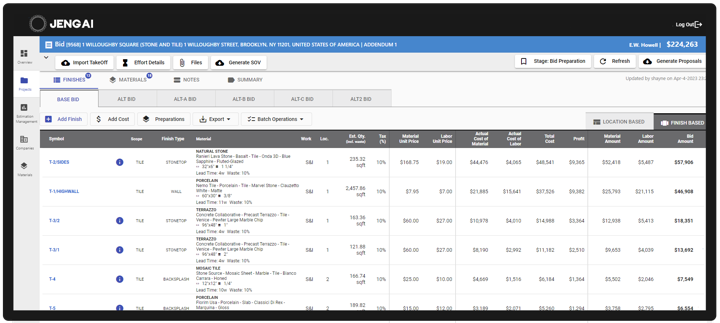How to Perform a Flooring Takeoff: Detailed Guidance for Flooring Professionals
When it's time to conduct a flooring takeoff, precision is paramount. Here's an industry-specific, step-by-step guide tailored for flooring trade professionals:
Preparation
Begin by collecting all necessary project documents. Detailed floor plans, finish schedules, and the flooring specifications are crucial. Make sure these documents are the latest versions to avoid discrepancies.
Select Specialized Software
Equip yourself with industry-specific flooring takeoff software such as RFMS for comprehensive material and labor estimates, or opt for PlanSwift and Blue Beam for intuitive plan navigation and markup tools. Measure Square stands out for its advanced measuring capabilities, while Callidus offers precision for complex layouts and patterns.
Examine the Floor Plans
Delve into the floor plans with a keen eye. Pay attention to the scale, note the type of flooring materials specified, and any transitions or thresholds. Look for architectural nuances like insets, recesses, or contoured areas that may require custom cuts.

Input Accurate Data
Input precise measurements into your chosen flooring takeoff software. For materials like tile, hardwood, or carpet, ensure to input specific product codes or installation patterns as this will affect the waste factor calculations.
Quantify Materials
Use the software to calculate the amount of material required. Remember to add an industry-standard waste factor — typically 5-10% for tile and hardwood, and more for patterned carpet due to matching requirements.
Add Labor Considerations
Factor in the labor aspects — include time estimates for preparation, installation, and finishing touches. Flooring takeoff isn't just about materials; labor costs can significantly impact the overall estimate.

Verification Process
Double-check the takeoff against the plans. In the flooring trade, an inch can make a difference between a perfect fit and an expensive mistake. It’s wise to review the takeoff manually, even when using sophisticated software.
Finalize the Takeoff
Generate a detailed takeoff report through your software. It should itemize every material type and quantity, associated labor, and provide a total cost estimate. Ensure it's clear and presentable for client proposals or internal review.
Remember, in the flooring trade, every job may have unique challenges, from historical renovation requirements to modern, eco-friendly material considerations. Stay updated with the latest industry standards and environmental regulations that may influence material selection and installation processes.
By meticulously following these steps and leveraging technology tailored for the flooring trade, you will achieve a more accurate, reliable, and efficient takeoff process. This not only ensures the profitability of your projects but also builds a reputation for meticulous attention to detail and project success.
